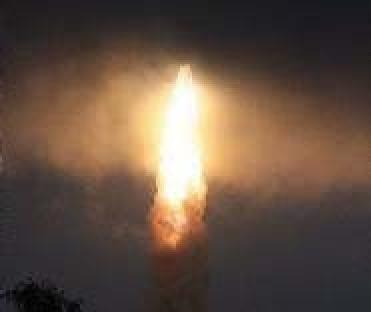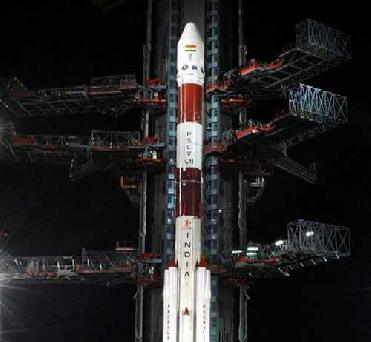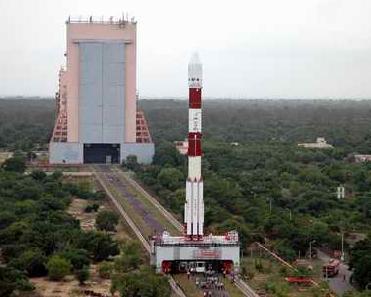
The lift off
SRIHARIKOTA (BNS): Chandrayaan-1, India's historic lunar mission blasted off this morning from the Satish Dhawan Space Centre in a textbook launch. Emotional scenes of celebration and repeated clapping broke out as the PSLV-C11 rocket blasted off with the spacecraft into the clear morning sky over the Bay of Bengal.
"It is a historic moment," Indian Space Research Organisation chief Dr G Madhavan Nair said, declaring that the first phase of the launch has gone off according to their plans.
The PSLV-C11 took off at 6.22 am this morning at the end of a 49-hour countdown. "We have started our journey to the moon, and the first leg of the journey has gone remarkably well," Nair said.
Scientists said every parameter of the launch has been according to the original plans. The spacecraft has been given sufficient altitude and velocity, as planned. By miraculous coincidence, the sky cleared up over the launch centre after days of heavy rains and thunderstorms. "We have been fighting against all odds," Nair said, talking about the vagaries of weather.
The Chandrayaan-1 would be a two-year long space odyssey during which the 11 payloads will carry out a host of activities, remote sensing activities that would help understand the origin of moon, its mineral deposits, presence of ice and water deposits. The Moon Impact Probe would demonstrate the technologies required for landing a probe at a desired location on the moon, as is planned in Chandrayaan-2.
The Chandrayaan-1 launch places India in an exclusive club of moon-faring nations including the US, Russia, Japan, China and European Space Agency.
India's homegrown rocket PSLV-C11 took off with the 1,380 kg spacecraft from the second launch pad at Satish Dhawan Space Centre (SDSC), some 80 kilometers north of Chennai.
The 44.4 meter tall four-stage PSLV-C11 blasted off from the second launch pad with the ignition of the core first stage. This is the 14th flight of ISRO's workhorse PSLV, which had launched 29 satellites into a variety of orbits since 1993. This launch vehicle uses larger strap-on motors to achieve higher payload capability.
Chandrayaan would reach the moon surface in the second week of November. The solar-powered Chandrayaan-I, carrying 11 payloads, weighs about 1,380 kg at the time of its launch and is shaped like a cuboid with the solar panel projecting from one of its sides.
Of the eleven payloads, five are entirely designed and developed in India, three are from the European Space Agency, one is from Bulgaria and two are from the US.
Chandrayaan-1 aims to achieve scientific knowledge through high-resolution remote sensing of moon in the visible, near infrared, microwave and x-ray regions of electromagnetic spectrum. With this, preparation of a three-dimensional atlas of the lunar surface and chemical and mineralogical mapping of entire moon surface was envisaged.
 Previous Article
Previous Article Next Article
Next Article













The Indian Air Force, in its flight trials evaluation report submitted before the Defence Ministry l..
view articleAn insight into the Medium Multi-Role Combat Aircraft competition...
view articleSky enthusiasts can now spot the International Space Station (ISS) commanded by Indian-American astr..
view article